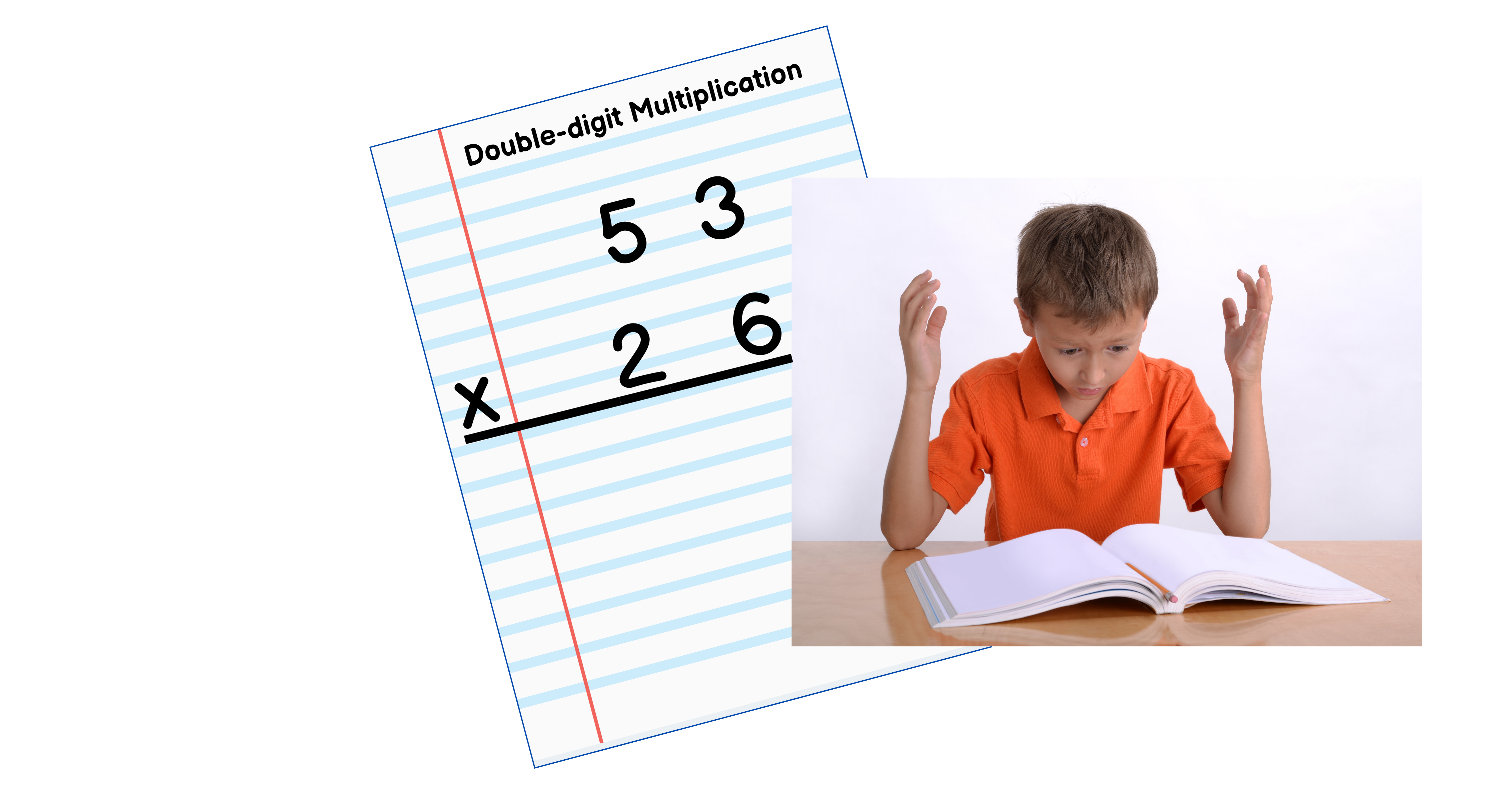Double-digit by double-digit multiplication—it’s one of those concepts that can be a struggle for students to learn. Teaching this skill can sometimes feel like building a sandcastle near the tide: you work hard to put it together, only to watch it wash away the next day.
I’ve tried various methods of teaching this in the past. The first method was a tactile approach. With movable cards, I have the students physically move the cards to show the order in which they are multiplied. I’ve also used a step-by-step guide which shows students, in words with pictures, the order to multiply digits. Every year I notice students fall into one of three categories. The first category are those who recognized the pattern right away. They are ready to jump right in and do the problems. The second group are able to remember the steps after a little repetition. Even if they didn’t remember the steps, they are able to understand and use the step-by-step guide. However it’s the third group that proves more of a challenge. They struggle to remember the steps, and were resistant to reading the step-by-step guide. Repetition was what they needed – and lots of it. But they also needed a more simple approach.
The Struggle
My struggling students initially approached double-digit multiplication with a mix of confusion and dread. As they learned the steps, they struggled to keep track of the order: which digits to multiply first, where to place the zero in the second row, and how to add everything up at the end. I could see their frustration building, and I knew I needed to find a way to make the process less intimidating and more visual. On a whim, I created a simple color-coded guide to help those students follow the steps at a glance. I simply made X’s to represent numbers and circled them in colors. There was virtually nothing to read. Just glance at the chart and follow. This super simplistic guide made all the difference in the world. With time and a lot of repetition, this final group of students were weaned from the guide and were able to remember the steps by themselves. The guide broke down the process into manageable steps, each with its own color. Suddenly, the chaos of juggling multiple digits and placeholders became organized and approachable. How happy I was to find a solution for this group of students!

The Solution: A Color-Coordinated Guide
Students just follow the colors to show the order of multiplying digits, as well as the placement of the numbers in the answer For example:
- Step 1: Multiply the numbers circled in red.
- Step 2: Multiply the numbers circled in green.
- Step 3: Add a placeholder zero (in black).
- Step 4: Multiply numbers circled in blue .
- Step 5: Multiply numbers circled in orange.
- Step 6: Add the numbers together.
The Results
The moment I handed out the sheets, something clicked for my students. They followed the colors like a roadmap, and for the first time, they weren’t second-guessing themselves. By visually guiding them through the steps, the process felt less abstract and more concrete. Best of all, their confidence skyrocketed. It was amazing to see how a simple tool could make such a big difference.
Of course, the ultimate goal is for students to internalize the steps without relying on the guide. For now, though, the color-coordinated sheet serves as a helpful scaffold. With repetition and practice, I’m confident they’ll be able to master the steps on their own.
Why This Worked
- Visual Clarity: The colors helped students focus on one step at a time, reducing overwhelm.
- Memory Aid: Associating each step with a specific color made it easier for them to remember the order.
- Confidence Booster: Success with the guide gave students the confidence to try more problems and practice independently.
A Quick Tip for Implementation
If you’re interested in trying this in your classroom, creating the sheet doesn’t take much time. You can hand write with markers or use a simple Word document or slide, and color-code the steps with text boxes or highlights. I’ve also laminated copies so students can use dry-erase markers to work directly on the guide. This has been especially helpful during small group sessions or independent practice.
Let’s Share Ideas!
Teaching double-digit multiplication is no easy task, but it’s so rewarding when students finally “get it.” If you have any go-to strategies or tools that work well for you, I’d love to hear about them. Let’s keep sharing ideas and helping each other make math more accessible for our students!
What’s your favorite way to teach double-digit multiplication? Drop a comment below—I’d love to learn from you, too!



